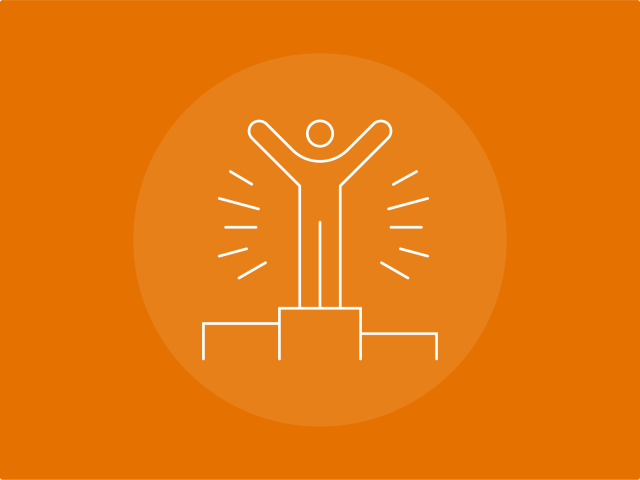

 Article
Article

 Since the pandemic hit, there is more of an imperative than ever to build real organizational and personal resilience. The tools that prove most useful in doing so include purpose, engagement and leadership behaviors — like modeling interpersonal human relatedness and personal growth after adversity.
Since the pandemic hit, there is more of an imperative than ever to build real organizational and personal resilience. The tools that prove most useful in doing so include purpose, engagement and leadership behaviors — like modeling interpersonal human relatedness and personal growth after adversity.

Written by
Businesses still face a raft of challenges since COVID-19 struck, many of them tied to how we collaborate and communicate — and the sense of meaning or purpose that work holds in our lives.
The Great Resignation highlights the difficulties in retaining talent, as more and more people struggle to understand what they want and how to find satisfaction in work. And in some sectors, huge advances in agility — an unexpected gift of the pandemic — risk being dialed back as some try to return to the standards of what “normal” life used to be.
For leaders grappling with these issues and navigating a workplace that is perhaps more politicized than before, there is an imperative to build — or perhaps rebuild — real organizational and personal resilience to weather whatever future storms lie ahead. And it’s not easy.
“We know from Gallup and other surveys that before the pandemic, around 85 percent of people felt ‘actively disengaged’ from work,” says Darden Professor Bobby Parmar. “And during the pandemic, as some of our structures became relaxed, people had more time to ponder their motivation and ask themselves if they were doing what they actually wanted to do. These people may now find themselves adrift.”
Resilience, like engagement, says Parmar, is driven by a sense of purpose. And in anchoring ourselves to purpose and to meaning, we are better equipped to meet fresh challenges head on and find opportunities to learn and improve, he says.
Darden Professor Lili Powell agrees that purpose is a means of “staying buoyant in turbulent times.” But there are caveats. She points to those working within health care, education and the military, vocations in which purpose is an inherent dimension of organizational culture. People in these professions typically experience work as a form of sacrifice, she says. For these employees, purpose is less of an issue than lack of leadership.
“For nurses or doctors or other first responders, having purpose can be a given,” Powell says. “But leadership has enormous power, too. Bouncing back from adversity and learning to grow as a result can be self-generated, but that can be hugely enhanced by leaders who make meaning out of these experiences, and in a way that opens up space for growth.”
Powell points to research that sheds light on why some veterans experience post-traumatic stress and others don’t.1 Besides childhood trauma and personality type, one of the biggest factors for resiliency is whether leaders model growth after adversity, she says.
“Leaders have real agency in their words and their actions. They can model the ‘grit and grace’ to step up, connect to purpose and to learn from negative experiences — and even reframe experiences and find new purpose that they can share with their teams.”
Powell also emphasizes that leaders need to build in time for recovery and rest — both for themselves and their teams — following experiences involving adversity. Finding the space to rejuvenate is an essential element in achieving and maintaining resilience.
Building resilience as a leader also hinges on creating a sense of connectedness with team members, says Parmar; cultivating a “relatedness” with others ensures they feel valued, especially when things go wrong.
“Things like purpose, engagement, autonomy and competence are accelerated by leaders who have the capacity to reach out to others and show appreciation and gratitude,” he says. “But when the to-do list starts getting long and the stakes get higher, this kind of human relatedness is often the first thing that goes out of the window — even if it’s one of the things that, as leaders, we have the greatest control over.”
This happens because we have a tendency to see these aspects of leadership as a “cost,” notes Powell.
“There’s a perception that connecting, giving feedback, showing gratitude and relating takes more time,” she observes, “and that there’s an associated cost in effort and resources that most leaders can’t afford to make. But in reality, you have to talk to your people anyway, so it’s being mindful about what you say and how you say it.”
Powell and Parmar recommend that leaders looking to build the resilience of their teams reframe these efforts as investments, and that they make the time in their calendars to practice connectedness, relatedness and the supporting mechanisms they can enact. It’s about starting small and scaling up, understanding that even little gestures can have a big impact.
As leaders, we can be fearful of changing our style because change of any kind implies discomfort, says Powell. For that reason, leaders should aim to practice connecting better until it becomes a habit, she adds.
“Habits are hard to form, but once they take hold, they are strong and hard to break,” she says. “So make the time in your schedule, find someone you can connect with, and practice relating better — practice ‘humane’ leadership — until it becomes second nature.”
Lili Powell and Bobby Parmar teach in the UVA Darden Executive Education & Lifelong Learning programs Leading Mindfully, Managing Individual and Organizational Change and Collaboration and Influence.
Parmar is an authority on how to make good decisions — one of the toughest challenges in leading a business. He focuses on how managers make decisions and collaborate in uncertain and changing environments to create value for stakeholders. Parmar’s work helps executives better handle ambiguity in their decision-making. His recent research examines the impact of authority on moral decision-making in organizations.
In 2012 Parmar wrote the article “Moving Design from Metaphor to Management Practice” in the Journal of Organizational Design.
B.A., MBA, Ph.D., University of Virginia
Powell’s current academic interests are mindful communication and leadership presence. She also has expertise in leadership and management communication, corporate reputation and diversity. In addition to her roles as professor at the UVA Darden School of Business and UVA School of Nursing, she also serves as director at the University's Compassionate Care Initiative.
Powell has authored numerous cases and is co-author of Women in Business: The Changing Face of Leadership. She is currently working on a new book — Present: Leadership as Wise Practice. She has presented her work at the Academy of Management, the Association for Business Communication, the Management Communication Association, the National Communication Association, and the Reputation Institute’s Conference on Reputation, Image, Identity, and Competitiveness conferences.
Powell has been a consultant, facilitator, instructor and coach to a number of individuals and organizations. Her clients have included the Council for Public Relations Firms, Federal Bureau of Investigation, KPMG, Lagos (Nigeria) Public Schools, National Industries for the Blind, Premier, Providian Corporation, United Technologies, University of Virginia School of Medicine and World Bank. She has taught internationally and worked with Executive MBA students from IAE Business School (Argentina), IBMEC Sao Paulo (Brazil) and the Stockholm School of Economics (Sweden).
B.A., M.A., University of Virginia; Ph.D., Northwestern University
How Leaders Can Build Resilience in Teams
Share